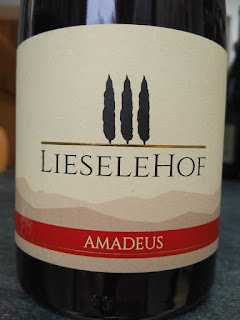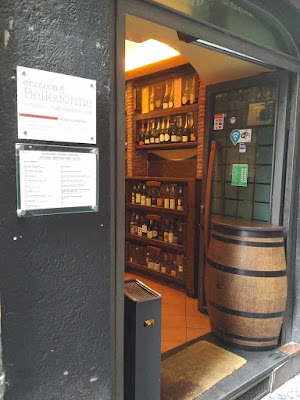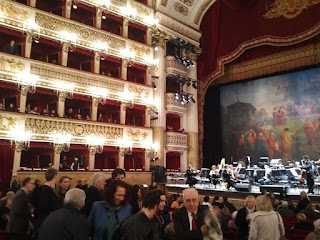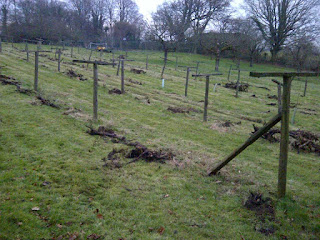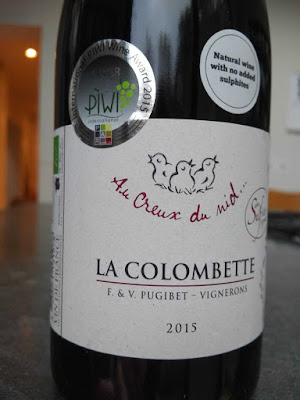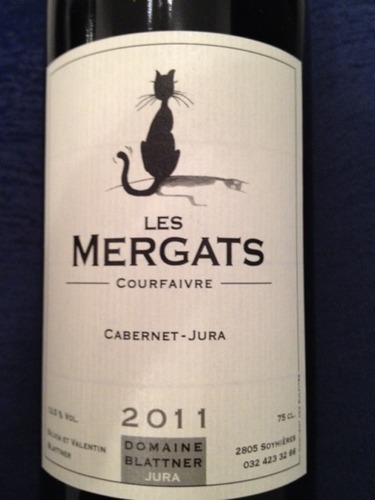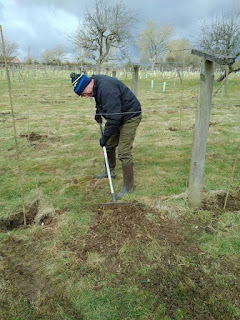 |
| Alto Adige/Sud Tyrol |
Schiava is one of the most interesting grapes you could hope to meet and yet it is not a single grape but a family of grapes. This family of grapes is not really a family at all because the members are not related and yet they exhibit similar characteristics.
Things get even more interesting. The Schiavas are exceedingly old and may well stretch back to Roman times because the name Schiava (slave) refers to the fact that the vines were tied to posts instead of growing up and between trees. So probably any vine trained on posts and lines was a Schiava. The Romans must have noticed that such vines gave better wine than the ones grown in the shade of trees.
References to Schiava stretch back to the 14th century but curiosly they refer to white wine until much later on. There is no known white colour mutation of Schiava but all Schiavas have lightness of colour and flavours in common, so maybe the white Schiavas were the red or 'grey' (Schiava Grigia)
vinificato in bianco? We will probably never know. D'Agata tells us
'the Schiavas are undoubtedly the most frequently mentioned family of grapes in the middle ages, both in agricultural treatises and official documents.'
Schiava has been very commonly grown in Lombardia, Trentino/Alto Adige and Germany where it is known as Trollinger (from the Tyrol). Mysteriously, Black Hamburg or Hamburgh is the name under which it has become known in Britain. The great vine at Hampton Court is Black Hamburg.
In modern times Schiava has undergone a sort of eclipse possibly for the same reason as other wines such as Bardolino, Riesling and even Chianti had their fall from grace at a certain moment. In Alto Adige/Suedtirol where you could say the Schiavas have their home, it accounted for 70% of the vineyard in 1970 but now occupies only 16%. Even so it is still the most planted grape in the region.
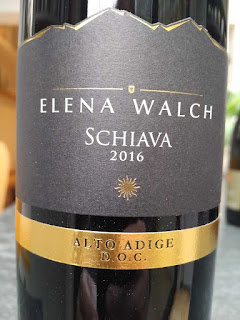 |
| Walch is a prominent producer of Schiava |
 |
| Remember the yellow carton of Elena Walch at Enoteca Conte in our recent Thinking of Napoli post? |
Again of interest is the fact that Schiava as a monovarietal is relatively hard to find even in the zone of production. It is more commonly found in Sankt Magdalena, a DOC which allows up to 15% Lagrein but masks the not so assertive character of Schiava turning the wine into something else altogether. It is also used in various other blends.
Even without the addition of Lagrein there seems to be a move to make this preternaturally light wine heavier and darker than its nature has suggested up to now. It may be global warming but more likely a tendency to make it more mainstream and conventional as we have seen in many regions where lighter wines are made - Grignolino and Bardolino come to mind.
As mentioned there are several unrelated types of grape called Schiava;
Schiava Grossa (Edelvernatsch)
Schiava Grigia (Grauvernatsch)
Schiava Gentile (Rothervernatsch)
Schiava Nera
Schiava Grossa is the most commonly used these days but most Schiavas are blends of the first three. Schiava Nera is rare and is the Lombardy branch of the family.
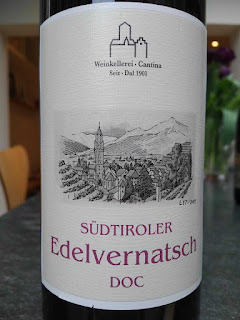 |
| A supermarket Edelvernatsch (Schiava Grossa). Inexpensive and delicious. |
Going back to Schiava's skeleton in the cupboard, as recently as 2006 the Oxford Companion to Wine's entry on Schiava was peppered with phrases such as
'extremely productive but not associated with wines of any real character or concentration.' '...the lighter style of wine produced by Schiava, once highly prized by the Swiss market, has lost favour.' 'Schiava based wines in general are definitely less fashionable than a generation ago...' '...as vineyards in Trentino-Alto Adige are being replanted, it is frequently being replaced by international varieties.'
 |
| The Kaltersee or Lake Caldaro is in the centre of Schiava/Vernatsch production |
These comments were no doubt the case at the time but since then we would suggest there has been a reaction to planting the international varieties and native vines are making a comeback everywhere. Also tastes are finally receding from Parker-esque weight and concentration and lighter wines may have their day again. One producer, Baron de Pauli has it thus;
PHÖNIX AUS DER ASCHE
Unterschätzt, vernachlässigt,
dem Verfall preisgegeben wie der Kalkbrennofen im Weinberg, von dem
er seinen Namen hat. Der autochthone Vernatsch wurde lange Zeit als
hässliches Entlein verspottet und belächelt. Doch nun erhebt er
sich wie ein Phönix aus der Asche und offenbart in diesem
Kalterersee seine burgundische Eleganz. Ganz und gar kein
Alltagswein, auch wenn man ihn wegen seiner fast unbeschränkten
Anpassungsfähigkeit jeden Tag trinken könnte.
Phoenix from the ashes
Undervalued, neglected, given over to extinction like the limekiln in the vineyard from where it gets its name. The native Schiava has been mocked and ridiculed as an ugly duckling for a long time. Yet it rises like a phoenix from the ashes in this Lake Caldaro and reveals its Burgundian elegance. By no means an everyday wine even if you could drink it every day thanks to its boundless adapt ability.
On our trip to the Alto Adige earlier this year, we found a few interesting bottles in the shops and the following list in a restaurant. Alcohol levels and retail prices (in Euros) are included;
CA----L, Pranzegg Martin Gojer Vernatsch. 12% 19.50
Campill, Fuori Serie MMXI, Pranzegg Vernatsch. 12% 20.00
Keil, ORG, Manincor Vernatsch. 12.5% 15.05
 |
| D'Agata praises old vine Schiava |
Geschleier Alte Reben, Gierlan Vernatsch. 13.5% 16.10
Puntay, Erste + Neue Vernatsch. 13.5% 10.00
Passion Riserva, St Pauls Vernatsch. 12.5% 18.00
Kalkofen, Baron di Pauli Vernatsch.. 13.00% 12.50
 |
| Weingut Dona has won prizes. |
Vernatsch.Dona, Weingut Dona. 12.5% 10.50
 |
| Schiava/Vernatch wines can also be Bio |
Amadeus ORG, Lieselhof. 12.5 15.70
Greifenberg, Kellerei Kaltern 13.00% 25.07
 |
| Nusserhof's price shows confidence that this is a product of value. |
Elda, Nusserhof, Heinrich Mayr 12.00% 31.50
An interesting range of Abv figures and prices.
Restaurant wine lists tended to have far more Lagreins and Sankt
Magdalenas than straight Schiavas but as mentioned things seem to be
swinging back to Schiava. We certainly hope so in the name of diversity.
So what does Schiava taste like? The following adjectives used by D'Agata (Native Wine Grapes of Italy) through his survey of the Schiava Group give a good idea of the flavours common to the various members of the family;
Pale red to dark pink
Bright Pink
Fresh red fruit (fresh redcurrant, sour red cherry, strawberry)
Floral (buttercup, violet) aromas and flavours.
Perfumed, light-bodied and high acid.
Pomegranite and marzipan delivering a slightly salty-sour tang on the usually bright finish.
That should get your taste-buds going. We do hope you will rush out and buy a bottle if you can find one.
 |
| Schiava |
PS. Schiava/Vernatsch has the dubious honour of having one of the most exensive lists of synonyms. To whit:
Admiral, Aegypter, Ägyptische, Ägyptischer, Aleksandriskii chernyi,
Baccaria, Bacheracher, Bammerer, Barth der Alten, Bilsenroth, Black
Gibraltar, Black Hambourg, Black Hamburg, Black Hamburgh, Black Prince,
Black Tripoli, Blauer Trollinger, Blauwälsche, Bocksauge, Bocksaugen,
Bocksbeutel, Bockshoden, Bockstraube, Braddick’s Seedling, Bruxelloise,
Chasselas bleu de Windsor, Chasselas de Jérusalem, Chasselas de Windsor,
Dachtraube, Dachtrauben, Dutch Hamburgh, Edel Vernatsch, Edelvernatsch,
Fleischtraube, Frankentaler, Frankenthal, Frankenthal noir,
Frankenthaler, Garston Black Hamburgh, Gelbholziger schwarzblauer
Trollinger, Gelbholziger Trollinger, Gros bleu, Gros noir, Gros plant
grand noir, Gross Italiener, Gross Vernatsch, Grosse race, Grosser
Burgunder, Grossroth, Grossschwarzer, Grossvernatsch, Hammelshoden,
Hammelsschelle, Hammelssohlen, Hampton Court Vine, Hudler, Huttler,
Imperator, Khei-Khan, Knevet’s Black Hamburgh, Kölner Blau,
Kreuzertraube, Lambert, Lamper, Languedoc, Lombard, Lugiana near,
Maltheser Roth, Malvasier, Malvoisier, Maroquin d’Espagne, Meraner
Kurtraube, Ministra, Modri Tirolan, Mohrendutte, Mohrentutte, Morrokin
Barbaron, Nougaret grosse race, Pfundtraube, Plant de Paris, Pommerer,
Pope Hamburgh, Prince Albert, Purple Hamburgh, Queen Victoria, Raisin
bleu, Raisin bleu de Frankental, Raisin de Languedoc, Red Hamburgh,
Rheinwein blau, Richmond Villa Hamburgh, Rothelbner, Salisbury violette,
Schiavone, Schiavone di Merano nero, Schliege, Schwarzblauer,
Schwarzblauer Trollinger, Schwarzer, Schwarzer Wälscher,
Schwarzwälscher, Spanisch Blau, Straihntraube, Südtiroler Kurtrauben,
Teplichnyi chernyi, Tirolan crni, Tirolinger, Trolinger, Troller,
Trollinger blau, Trollinger gelbholzig, Trollinger weissholzig,
Trollingi kék, Tschaggele, Uva Cenerente, Uva meranese, Uva near
d’Amburgo, Valentines, Victoria, Victoria Hamburgh, Wälscher, Warner’s
Hamburgh, Weissholziger Trollinger, Welke Burgundske, Welko modre,
Zottelwälscher and Zottler.



















